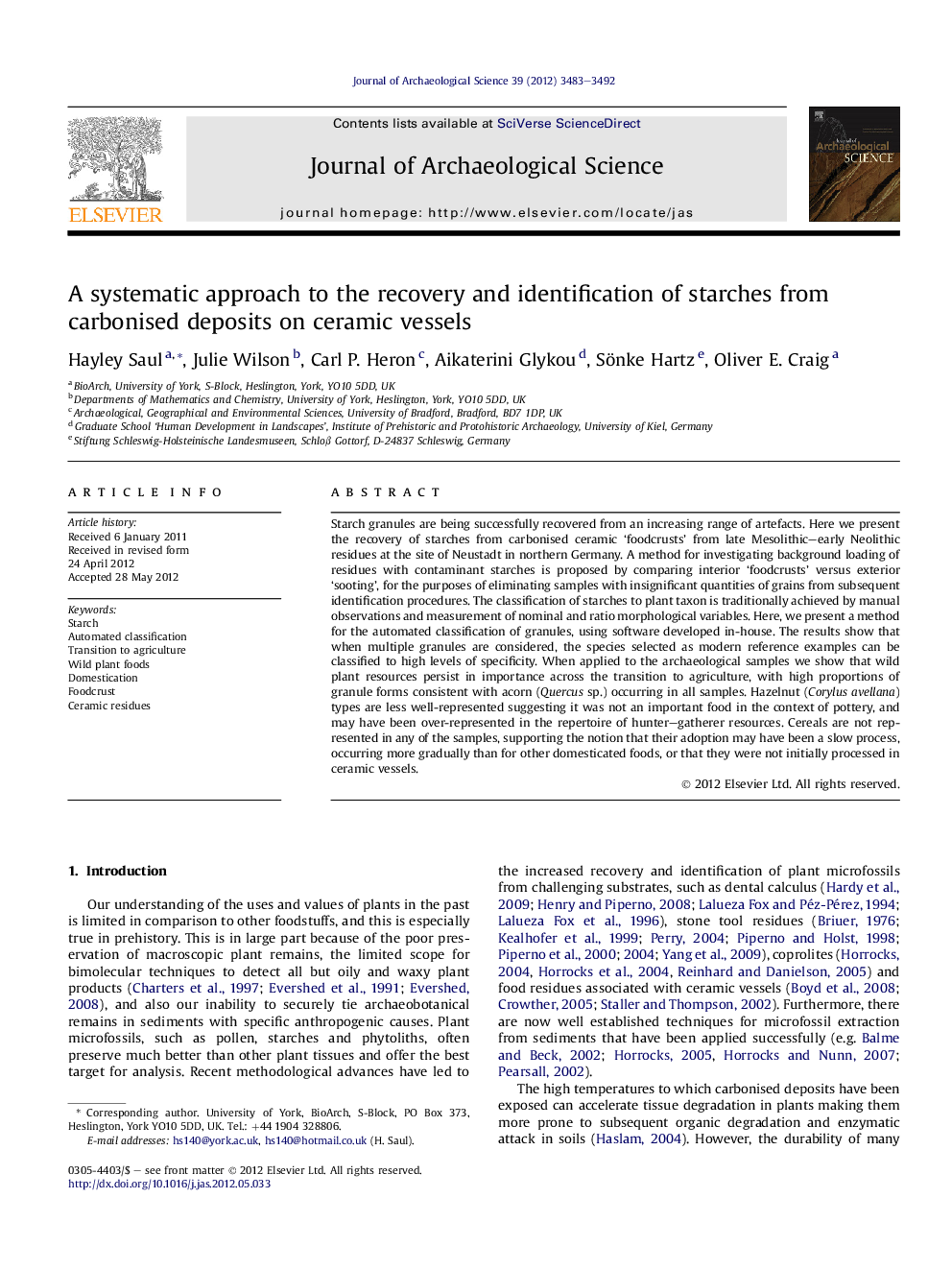| Article ID | Journal | Published Year | Pages | File Type |
|---|---|---|---|---|
| 1035641 | Journal of Archaeological Science | 2012 | 10 Pages |
Starch granules are being successfully recovered from an increasing range of artefacts. Here we present the recovery of starches from carbonised ceramic ‘foodcrusts’ from late Mesolithic–early Neolithic residues at the site of Neustadt in northern Germany. A method for investigating background loading of residues with contaminant starches is proposed by comparing interior ‘foodcrusts’ versus exterior ‘sooting’, for the purposes of eliminating samples with insignificant quantities of grains from subsequent identification procedures. The classification of starches to plant taxon is traditionally achieved by manual observations and measurement of nominal and ratio morphological variables. Here, we present a method for the automated classification of granules, using software developed in-house. The results show that when multiple granules are considered, the species selected as modern reference examples can be classified to high levels of specificity. When applied to the archaeological samples we show that wild plant resources persist in importance across the transition to agriculture, with high proportions of granule forms consistent with acorn (Quercus sp.) occurring in all samples. Hazelnut (Corylus avellana) types are less well-represented suggesting it was not an important food in the context of pottery, and may have been over-represented in the repertoire of hunter–gatherer resources. Cereals are not represented in any of the samples, supporting the notion that their adoption may have been a slow process, occurring more gradually than for other domesticated foods, or that they were not initially processed in ceramic vessels.
► Starches can be successfully extracted from carbonised ceramic residues. ► In some cases classification of granules could be achieved to high specificity. ► Starches were classified from Mesolithic and Neolithic Baltic pottery residues. ► These findings do not suggest a use of domesticated cereals supporting slow adoption.
